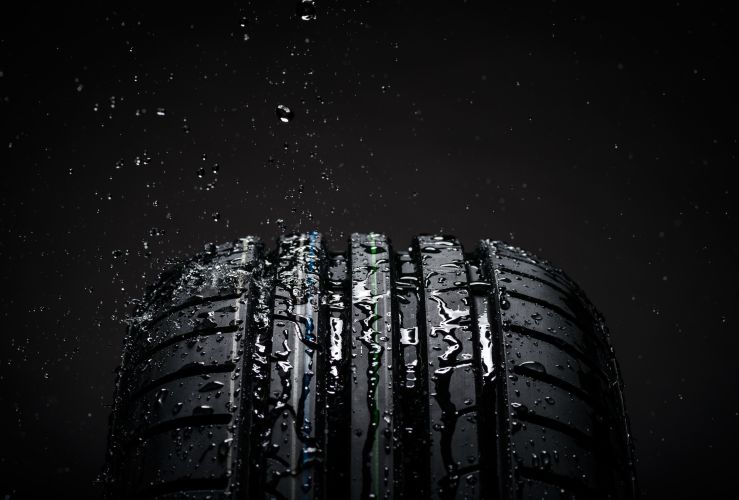
Under EU law, all tyres must feature an EU tyre label. This label shows important safety and environmental information related to the specific tyre, detailing the tyre's wet grip; fuel efficiency and noise ratings.
Did you know tyres can impact your car's fuel economy? In fact, tyres can account for up to 20 percent of fuel consumption. Buying a set of fuel efficient tyres should save you money - and minimise CO2 emissions.
The fuel efficiency ratings:
On the EU tyre label you'll see a colour coded chart, running from A to G.
A - green - most fuel efficient
G - red - least fuel efficient
Note that 'D' is not featured on passenger car tyre labels.
While many factors impact fuel efficiency, if you choose a set of A-rated tyres, you might save hundreds of pounds over the lifetime of the tyres.
Note that fuel efficiency is also impacted by under-inflated tyres; your car's weight; and your style of driving, among other factors.
A set of tyres with a high wet-grip rating will stop faster than tyres with a low wet-grip rating.
'Wet grip' is synonymous with wet braking performance.
Wet grip is rated on a scale from A to F:
A - most effective at stopping quickly in the wet
F - least effective at stopping quickly in the wet
Stopping distances can be greatly impacted by the type of tyres on your car.
Note: You should be aware of and adhere to the recommended stopping distances.
This relates to how much noise your tyres make on the road.
The decibels emitted by a tyre is denoted by a loudspeaker icons - the more waves, the louder the tyres.
1 black wave: Quiet (3 decibels or more below the European limit)
2 black waves: Moderate (between the European limit and 3 decibels below)
3 black waves: Noisy (above the European limit)
Choosing a quiet tyre will contribute to quieter towns and cities.
It is not clear how tyre labelling will be impacted in the UK post-Brexit. However, all tyres made for the EU market will continue to require EU labelling.




